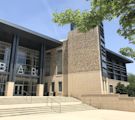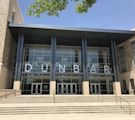Ad
related to: Where is Dunbar High School located?View the locations, phone numbers & education services of all private schools nationwide. Check the nearest private schools and their detailed information for free now.
- Obituaries
Find out more about our obituaries
here.
- Property Tax Lookup
Get your property assessment and
tax data with our database
- Hours And Locations
Online access to all power
utilities of all states and...
- Public Records
Search for all free public records
in the United States, including ...
- Mugshot Lookup
Look up Inmate information through
county public jail inmate...
- Assisted Residence
Check senior nursing homes in your
area and get the best service...
- Obituaries
Search results
Paul Laurence Dunbar is the first high school to serve African-Americans in the United States. Dunbar High School defied the odds and in the process changed America. In the first half of the twentieth century, Washington D.C’s Dunbar High was an academically elite public school, despite being racially segregated by law and existing at the ...
- School Policies
Dunbar High School » School Info » School Policies. DCPS has...
- Mission and Vision
Core Beliefs. We believe Black lives matter; We believe...
- About Dunbar
1150 Michigan Ave NE. Washington, DC 20017. (202) 759-1999....
- School Policies
District of Columbia Districts. High Schools. Education. Home. Dunbar High School. 101 N St. Nw, Washington, District of Columbia | (202) 698-3762. # 10,801 in National Rankings....
- 101 N St. Nw, Washington, 20001, DC
- 020 2698 3762
- Overview
- Founding and early years
- Academic excellence and growing reputation
- After desegregation
Dunbar High School, high school in Washington, D.C., that was the first Black public high school in the United States. Since it opened in 1870, it has educated many notable figures, including surgeon Charles Richard Drew, jurist William Henry Hastie, Jr., and writer Jean Toomer. Its faculty has included eminent Black scholars such as Carter G. Wood...
In the late 1860s, Washington, D.C., had a booming Black population. Slavery had been abolished there in April 1862, nearly nine months before the Emancipation Proclamation took effect in the rest of the country. Many African Americans traveled to Washington from slave states, seeking freedom—and they continued coming after the war ended, to find work or reunite with family members. In 1867 Congress granted the city’s Black residents the right to vote, overriding a veto by Pres. Andrew Johnson. When voter registration closed later that year, 7,271 Black men had registered—nearly equal in number to the white voters in Washington (8,240).
William Syphax, a civil servant whose father had been enslaved in Virginia, was appointed in 1868 to lead the District of Columbia Board of Trustees of the Colored Public Schools. Syphax was part of the city’s Black elite, a group referred to in Washington’s leading Black newspaper as the “Colored 400.” Many of these residents were the descendants of both the white gentry and the people they enslaved (Syphax himself may have been a descendant of Martha Washington). “These free blacks had been in Washington, DC, as long as there had been a Washington, DC,” the journalist Alison Stewart wrote in her book First Class: The Legacy of Dunbar, America’s First Black Public High School (2013).
Under Syphax’s leadership, the Preparatory High School for Colored Youth, which would become Dunbar, was opened in 1870. Its first class, which consisted of only four students, was taught in the basement of the Fifteenth Street Presbyterian Church. By the end of the first year, the number of students had grown to 45. The school ran on public funding and money donated from the estate of Myrtilla Miner, an abolitionist and educator.
One of the early principals was Mary J. Patterson, the first African American woman in the U.S. to receive a college degree (from Oberlin College in 1862). She developed the curriculum to include mathematics, German, Latin, geography, history, and physics. The first substantial graduation was in 1877, with 11 students receiving degrees.
In 1891 the school moved to a new building on M Street in northwest Washington and became known as the M Street High School. Robert Terrell, who would become the first Black judge in Washington, and Anna Julia Cooper, who is sometimes known as the mother of Black feminism, each served as principal at about the turn of the 20th century, and they helped develop the school into an academic powerhouse. Increasingly large numbers of its students were accepted into elite colleges, including Harvard and Amherst.
Are you a student? Get Britannica Premium for only 24.95 - a 67% discount!
Learn More
The school moved to another new building in 1916, and it opened that fall with 1,117 students. The new school was named after Paul Laurence Dunbar, a Black poet who had died of complications from tuberculosis in 1906. The academic and behavioral standards were rigorous, and the leadership took care to filter out students who were better suited to vocational schools or business schools or who were ready to enter the job market instead.
As of 1954, when Washington began desegregating its schools, more than 16,000 students had graduated from Dunbar. That year it sent 80 percent of its graduates to college, the highest share of any school in the city—Black or white. However, over the next decade and a half, Dunbar’s reputation declined. Black students could go to school anywhere in the city, and Dunbar ceased to be a selective academic school. In 1977 it moved to another new building, this time without walls to separate the classrooms—a design feature that was seen as innovative at the time but led to poor results. By 2012 only about 6 in 10 Dunbar students graduated on time, and fewer than one-third were proficient in math and reading.
The school transferred to yet another new building in 2013. In an interview with the National Trust for Historic Preservation, Stewart praised the new facility for the way it featured images of the school’s most illustrious graduates:
Sep 1, 2023 · Dunbar Senior High School is a public school located in WASHINGTON, DC. It has 868 students in grades 9-12 with a student-teacher ratio of 14 to 1. According to state test scores, 1% of students are at least proficient in math and 19% in reading.
- (135)
- (202) 698-3762
- 101 N ST NW, WASHINGTON, 20001, DC
Address 101 N STREET NW Phone 202-698-3762 Who can I talk to about special education services? Monica Kurude. 202-698-3762. monica.kurude@k12.dc.gov. School Hours. 8:45 a.m.-3:15 p.m. School Uniform Required. About this school.
5700 Ramey Ave, Fort Worth, Texas | (817) 815-3000. # 13,242-17,655 in National Rankings. Overall Score less than 25. quick stats. Grades. 9-12. Grades 9-12 Enrollment. 864. Student-Teacher...



